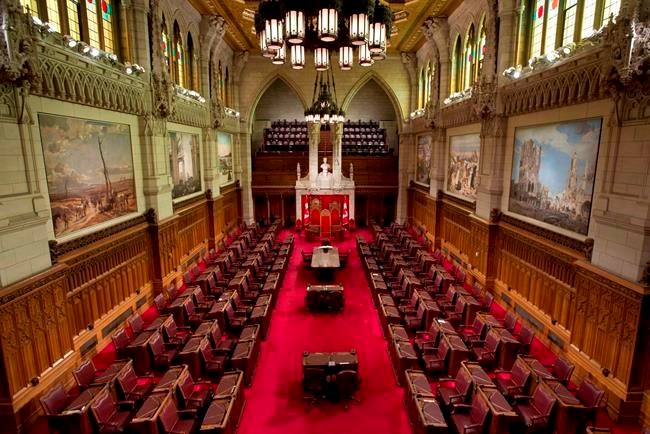Sharon Nyangweso says she first heard of Indigenous people in Canada when she was eight years old. Her family had just moved to Canada for her mother’s job at the Kenya High Commission in Ottawa. At one of the gatherings, a guest approached her mom upon learning they just arrived in the city.
What happened next stuck with Nyangweso.
The person told her mom to avoid Rideau Street because Indigenous people were there and “they were always drunk." This memory unsettles her to this day, because the comment came not from a naturalized Canadian, but from someone in her own circle.
“That came from another immigrant,” she said in a telephone interview Thursday. “Not just another immigrant, but one that had intimate knowledge of what it meant to be part of a colonized nation.”
Nyangweso said there’s a wide gap when it comes to dissemination of information to immigrants about Indigenous Peoples and cultures in Canada. One that, she said, causes the perpetuation of misconceptions resulting from the country’s history of colonialism.
In 2015, the Truth and Reconciliation Commission, which examined the history and legacy of residential schools in Canada, issued 94 recommendations, or calls to action.
Numbers 93 and 94 urged the federal government to update the Canadian citizenship guide and test, as well as the oath, to reflect a more inclusive history of Indigenous Peoples and a recognition of their treaties and rights. This way, newcomers and immigrants to Canada would have a more thorough understanding about First Nations, Métis and Inuit, as well as their cultures.
On Thursday, the House of Commons passed Bill C-8 after unanimously agreeing earlier in the week to fast-track it. The bill, which must still be passed by the Senate, would amend the Citizenship Act to update the oath in line with what the TRC recommended.
The new oath would read: "I swear (or affirm) that I will be faithful and bear true allegiance to Her Majesty Queen Elizabeth the Second, Queen of Canada, Her Heirs and Successors, and that I will faithfully observe the laws of Canada, including the Constitution, which recognizes and affirms the Aboriginal and treaty rights of First Nations, Inuit and Métis peoples, and fulfil my duties as a Canadian citizen."
At a committee meeting Wednesday, Immigration Minister Marco Mendicino thanked all members of Parliament for supporting the passage of the bill, saying he looks forward to working with colleagues in the Senate to ensure it becomes law.
His press secretary, Alexander Cohen, said: “Reconciliation is a whole-of-government initiative."
Cohen also said the Liberal government is still revamping the content of the new citizenship guide to make it more inclusive. The new guide will have 10 chapters and will paint a diverse image of Canada. It will include stories of Black Canadians, LGBTQ Canadians, francophones and Canadians with disabilities. It will also have a chapter on residential school. There’s still no schedule as to when the updated guide will be released.
Matthew Norris, board president of the Urban Native Youth Association in Vancouver, said recent immigrants to Canada are in a good position to be allies to Indigenous people.
“I think newcomers to Canada have a role to play to understand where the society has come, where to go, and to be voices of support for Indigenous people, as we’re constantly trying to fight for our rights,” said Norris.
Norris said he encourages people and stakeholders to also look at other TRC calls to action, particularly regarding the implementation of the United Nations Declaration on the Rights of Indigenous Peoples. Bill C-15, which deals with that, is currently before the Senate.
Stronger calls to recommit to the project of reconciliation have emerged after Tk'emlups te Secwepemc First Nation announced last week that ground-penetrating radar located what are believed to be the remains of 215 children in an unmarked burial site on the grounds of a former residential school in Kamloops, B.C.
Over more than a century, some 150,000 First Nations, Métis and Inuit children were forcibly sent to government-funded, church-operated schools, where many suffered abuse and even death.
“We talk about Indigenous history but it’s also the Indigenous presence,” Norris said. “Residential schools weren’t that long ago. It’s affected our family members. It’s affected younger generations. Intergenerational trauma is continuing to rear its ugly head throughout our lives.”
Nyangweso, who just took her citizenship test recently, said adequate information about Indigenous lands, peoples and cultures will help newcomers and immigrants to better engage in civic processes and become better allies for Indigenous rights.
She added she hopes teaching newcomers about Indigenous people and cultures should not just start and end with the citizenship guide or the oath.
She said good information, that's accessible outside of the citizenship guide, will equip immigrants and new Canadians to be more respectful inhabitants on Indigenous lands.
This report by The Canadian Press was first published June 3, 2021.
Arvin Joaquin, The Canadian Press


